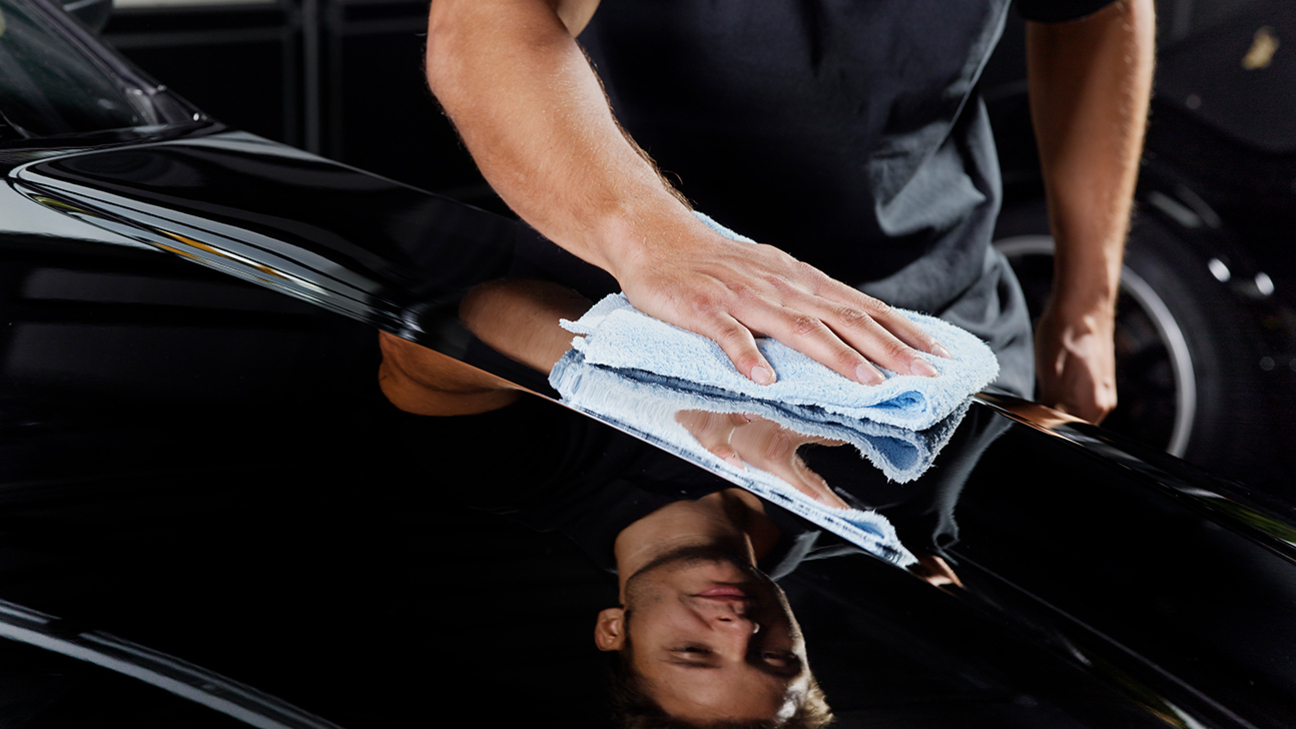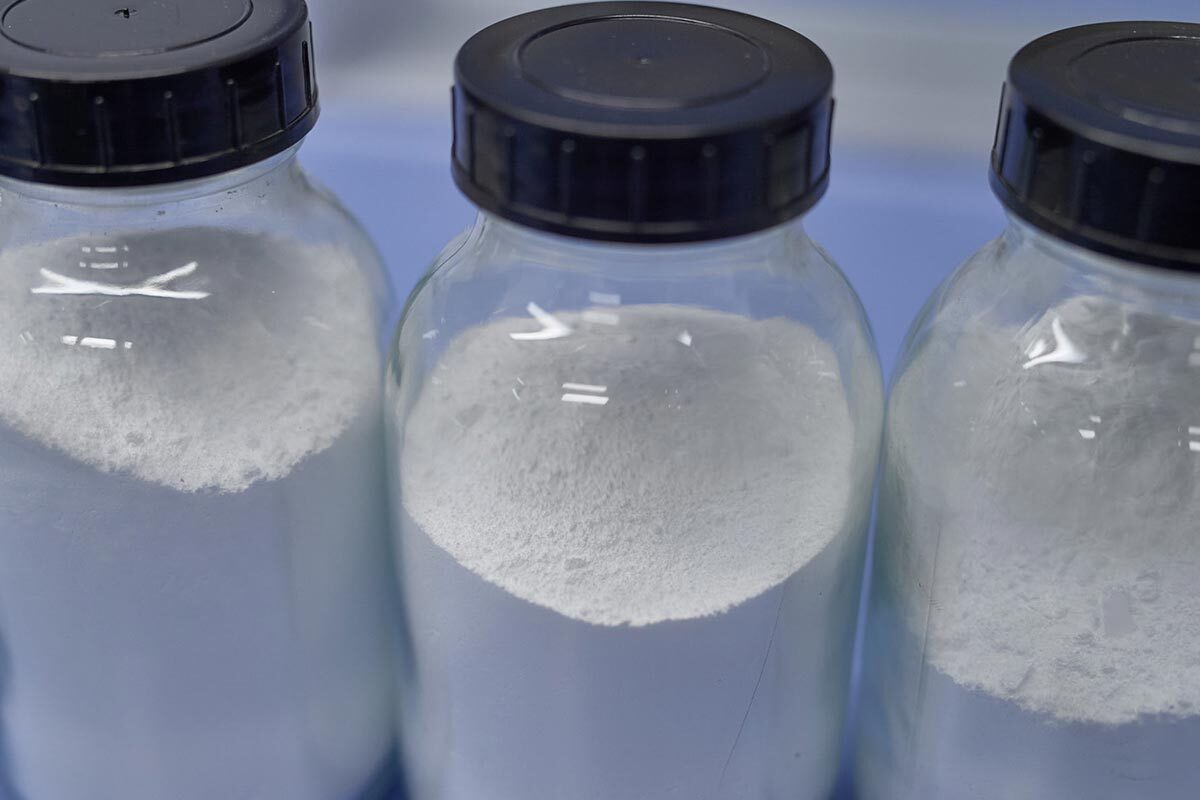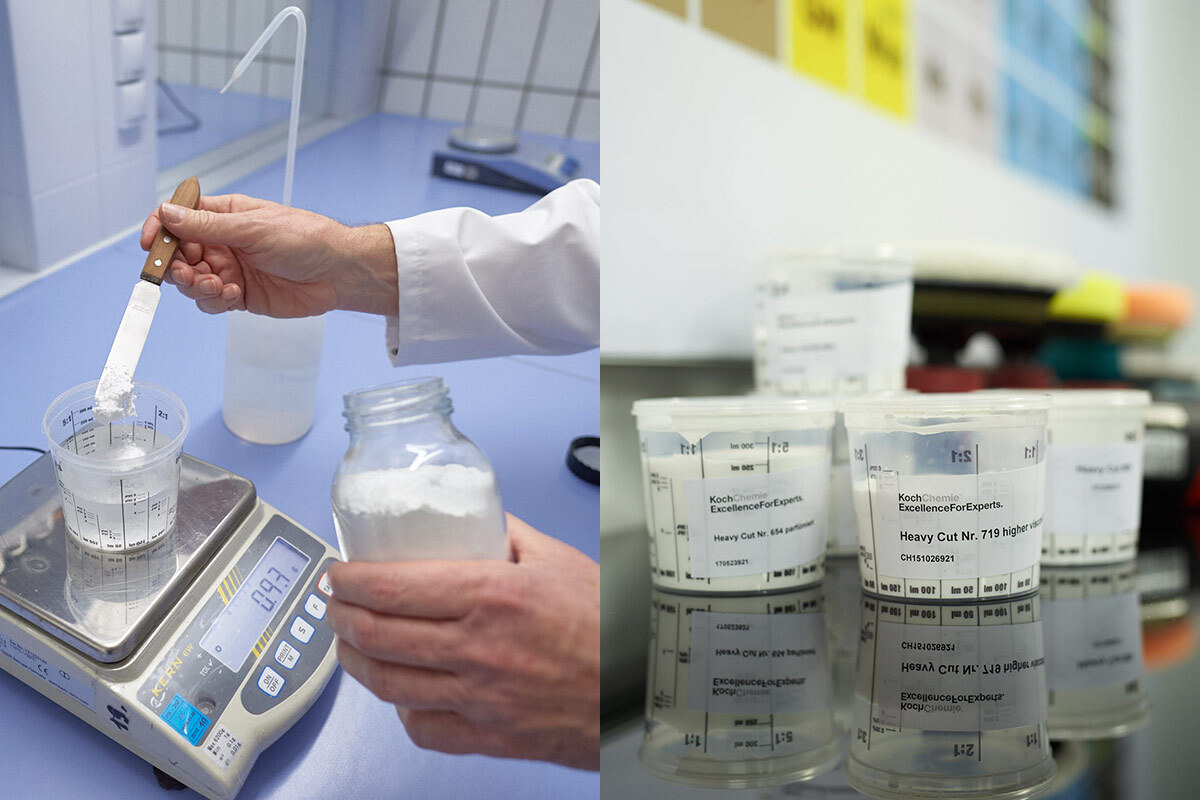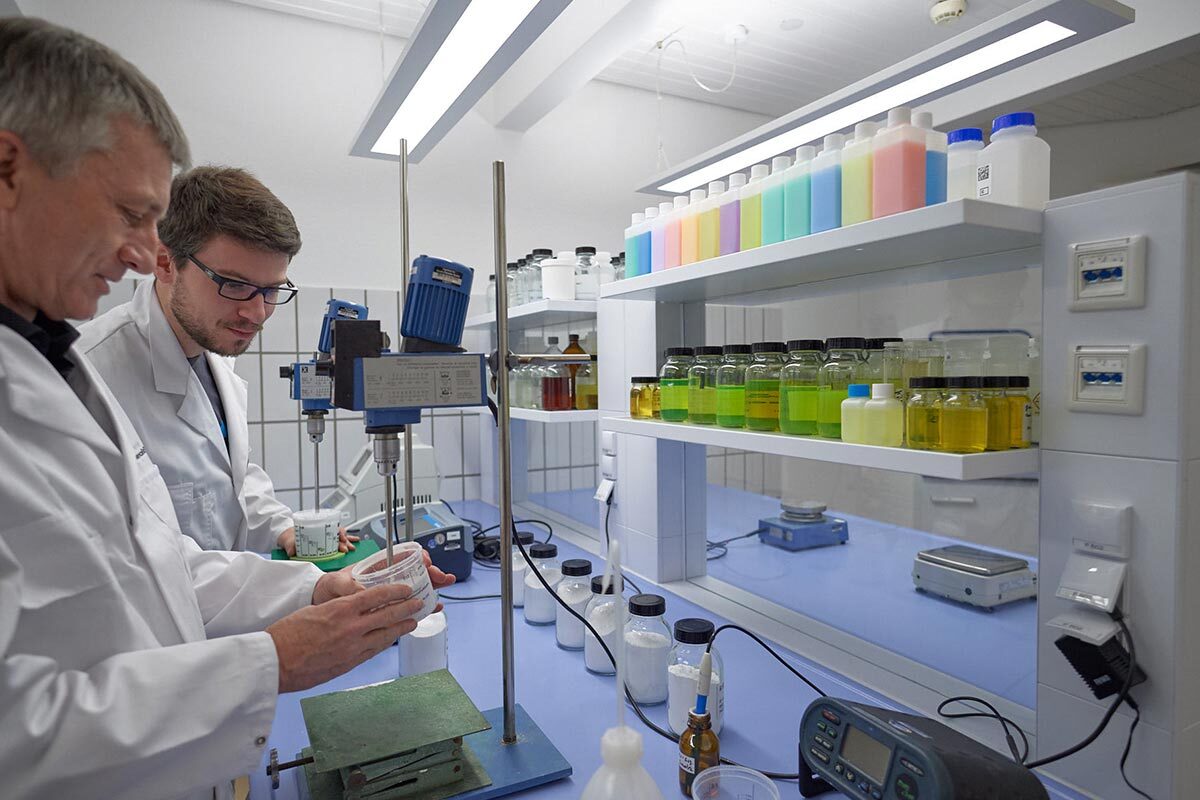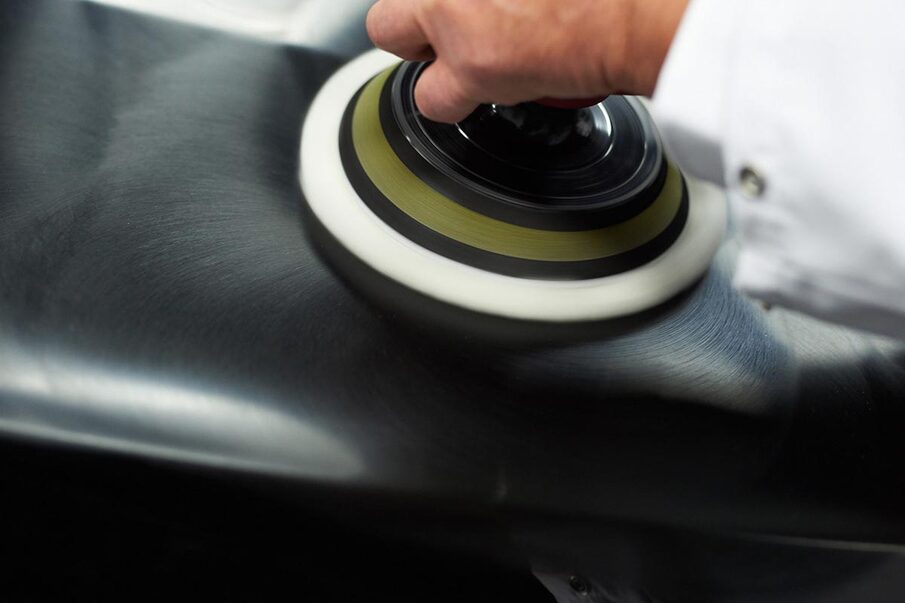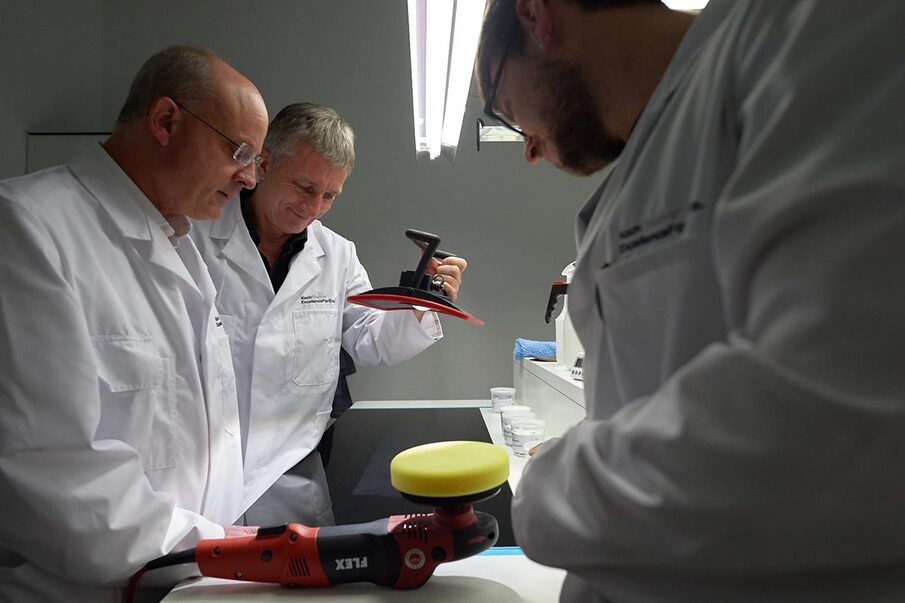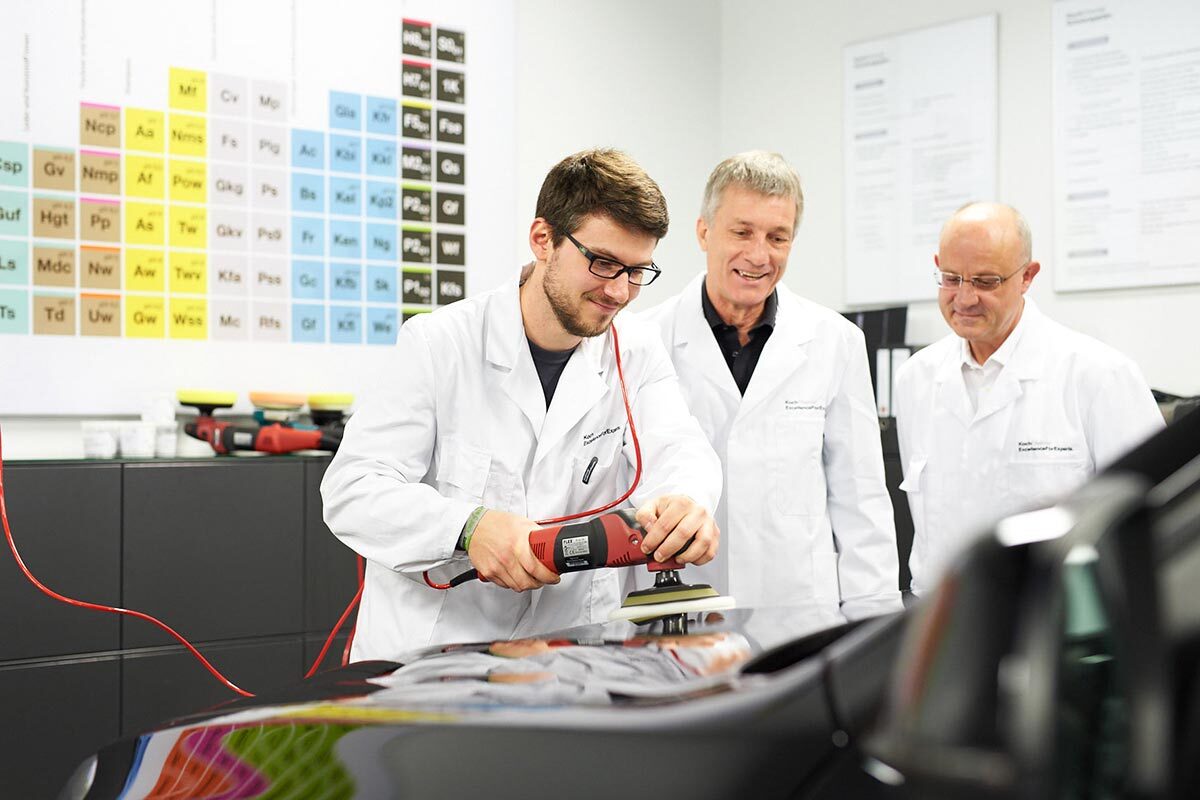What follows the preliminary deliberations is a precise and quantifiable science. With a specific goal in mind — such as the development of a polish that allow customers to achieve an even glossier surface in less time — the team sets clear parameters for attaining this goal. With the appropriate parameters as a guideline, they begin mixing together various ingredients to form a prototype polish. Sometimes, just a little more of this or that, or the inclusion of a particular mineral is all it takes to create the perfect mixture.
The team runs tests in a “polish technicum” in order to examine the effects of various levels of different ingredients in practice. This professional testing environment is equipped with buffers, pads in all conceivable shapes and sizes, and — also importantly — excellent lighting. At the centre of it all is an entire car and several individual metal sheets: the test surfaces. Dark paints are known for their sensitivity, showing even the smallest of scratches, which is why the test surfaces are painted in the blackest of blacks imaginable.
Dull, weathered surfaces reclaim their high gloss shine
The team gets down to business — and starts by destroying the mirror-smooth paint of the test objects. This is essential in order for them to achieve a starting point that matches real-life conditions: a weathered, painted surface covered in microscopic scratches. This is done with a 2000-grit Abralon pad. Stretched over a pneumatic polisher, the pad turns the beautiful gloss of the black metal sheets into a dull matt. The team then applies test polish after test polish, each time with an exactly specified method — from the type of polishing machine and pad right down to the number of revolutions — bringing the dull, worn surface back to its high gloss shine.
These tests are the most important part of the development of new polishes, because each combination of ingredient shows a different set of results. These differences are small but essential. They are discerned through the use of a detailing light for paint correction and an expertly trained eye. The development team uses a variety of criteria to judge the quality of the polish. These include the time it takes to bring life back to the dull finish, the cut, the level of shine, the sleekness of the polished surface and others more.
Making the cut
Only those products that meet the strictest of criteria make the cut. Exactly what this entails is our secret to keep, but we are willing to reveal one thing: Even with decades of experience in concocting polishes, the development team still doesn’t come up with the perfect mixture right away. It takes a lot of stamina and patience to get a polish into series production at Koch-Chemie.
After all, our clients are professionals who are impressed by high performance, not words. Only a carefully developed product can achieve this. The next step in the process is production. Read more about this process in our article “Shine in a Bottle”.
